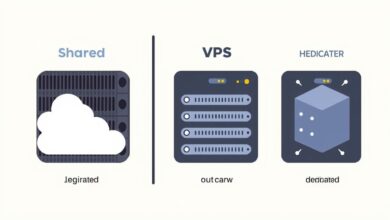Introduction to Load Balancers: What They Are and Why Your Website Needs Them

Imagine your website or application suddenly becomes incredibly popular. While exciting, this surge in traffic can overwhelm your server, leading to slow loading times, frustrating user experiences, and even complete crashes. This is where load balancers step in as unsung heroes of the digital world. Understanding what load balancers are and why they are crucial is the first step towards building a robust, reliable, and scalable online presence.
Essentially, load balancing involves distributing incoming network traffic or user requests efficiently across a group of backend servers, often called a server farm or server pool. Think of a load balancer as a smart traffic controller for your website or application. It sits between the user (client) and your servers, intercepting incoming requests and intelligently routing them to the server best equipped to handle them at that moment. This prevents any single server from becoming a bottleneck.
`[Hint: Insert diagram illustrating a load balancer distributing traffic from users to multiple backend servers]`
What Exactly Are Load Balancers?
Load balancers are devices or software programs designed specifically for this traffic distribution task. They act as a reverse proxy, meaning they present a single point of contact to the outside world while managing multiple servers behind the scenes. They can come in several forms:
- Hardware Load Balancers: These are dedicated physical appliances optimized for high performance and throughput. They often offer robust features but can be expensive and less flexible.
- Software Load Balancers: These run on standard hardware or virtual machines, offering more flexibility and scalability compared to hardware solutions. They can be open-source or commercial.
- Cloud-Based Load Balancers: Services offered by cloud providers (like AWS ELB, Azure Load Balancer, Google Cloud Load Balancing). These are highly scalable, managed services that integrate seamlessly with cloud infrastructure, making them a popular choice today.
How Do Load Balancers Work?
Load balancers use various algorithms to decide where to send each incoming request. The goal is always to distribute the load evenly and ensure optimal performance and availability. Some common algorithms include:
- Round Robin: Requests are distributed sequentially across the group of servers. Simple but doesn’t account for server load or health.
- Least Connections: Directs traffic to the server with the fewest active connections. Good for sessions that might last longer.
- Least Response Time: Sends requests to the server currently responding the fastest.
- IP Hash: Uses the client’s IP address to determine which server receives the request, ensuring a user consistently connects to the same server (useful for maintaining session state).
Beyond simple routing, modern load balancers also perform health checks. They continuously monitor the status of backend servers. If a server fails a health check (becomes unresponsive or returns errors), the load balancer automatically stops sending traffic to it until it recovers, ensuring users aren’t directed to a faulty server.
Why Use Load Balancers? The Key Benefits
Implementing load balancers offers significant advantages, particularly as your application grows:
1. Enhanced Performance and Scalability
By distributing requests, load balancers prevent server overload, leading to faster response times and a better user experience. Users expect websites to load quickly – delays can lead to high bounce rates. Load balancing also makes scaling easier. Need more capacity? Simply add more servers to the pool; the load balancer integrates them seamlessly.
2. Increased Reliability and High Availability
This is perhaps the most critical benefit. If one of your backend servers fails, the load balancer automatically reroutes traffic to the remaining healthy servers. This redundancy minimizes downtime and ensures your application remains available to users, even during hardware failures or maintenance. The cost of downtime can be substantial, making high availability a business necessity. Learn more about the principles of load balancing on Wikipedia.
`[Hint: Insert image/infographic highlighting the cost of website downtime]`
3. Improved Security
Some advanced load balancers can provide additional security benefits. They can act as a buffer, potentially absorbing or mitigating certain types of attacks like Distributed Denial of Service (DDoS) before they reach your core servers. They can also handle SSL/TLS encryption and decryption, offloading this CPU-intensive task from your web servers.
4. Simplified Maintenance and Flexibility
Need to perform maintenance, updates, or deploy new code on a server? With a load balancer, you can gracefully remove a server from the pool without disrupting user access. Traffic is automatically redirected to other active servers. Once maintenance is complete, the server can be added back into rotation.
Do You Need a Load Balancer?
While a small personal blog might not initially require one, load balancing becomes essential for:
- Websites expecting moderate to high traffic volumes.
- E-commerce platforms where uptime and performance directly impact revenue.
- Critical business applications where downtime is unacceptable.
- Applications designed for scalability and growth.
- Any service aiming for high availability and fault tolerance.
If you’re planning for growth or already experiencing performance bottlenecks or availability issues, exploring load balancers is a crucial step. For related infrastructure topics, consider reading about understanding cloud server options.
In conclusion, load balancers are fundamental components of modern web architecture. They are not just about handling traffic; they are about ensuring performance, reliability, scalability, and even security for your online services. By intelligently distributing workloads, they keep applications running smoothly, providing a seamless experience for users and peace of mind for administrators.




